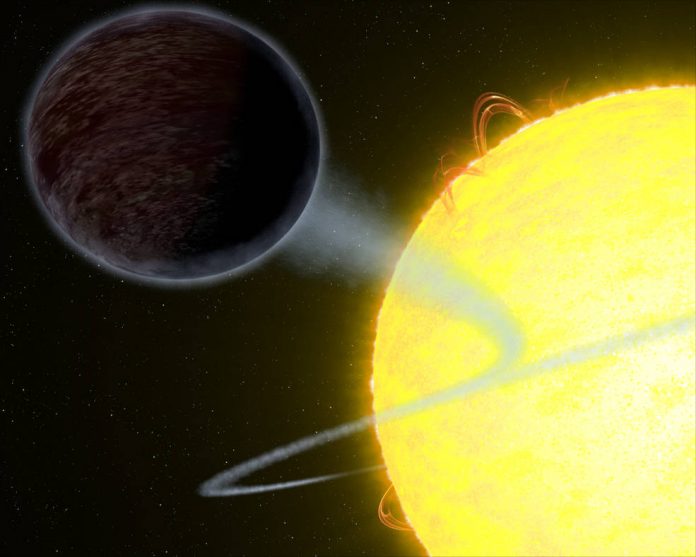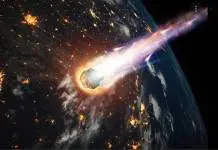
NASA’s Hubble Space Telescope observed the exoplanet WASP-12b on Thursday to calculate how much light it reflects back into space. The Hot Jupiter is pitch black as it eats roughly 94% of the light that hits it surface rather than reflecting it like most planets do.
The planet was discovered almost a decade ago, in 2008, and since our first encounter with it, scientists have studied it extensively. More recent and closer looks have unveiled that its reflectance value, known as albedo, is “extremely low,” making it darker than fresh asphalt even to the eye of the Hubble.
Sitting 1,400 lightyears away from Earth, the gaseous giant is full of interesting facts other than its pitch-black surface. It is also extremely hot, and it presents some unique qualities that we don’t see too often in our Solar System.
This is an artist's depiction of exoplanet WASP-12b. This planet has 2 faces & the difference is day & night!
READ: https://t.co/g4UQw0W5NO pic.twitter.com/Xgojars3PC— Hubble (@NASAHubble) September 14, 2017
It is always night or day at WASP-12b
WASP-12b has something very particular about it that influences in a way its extremely low albedo: it is too close to its star. The planet orbits it from roughly 3 million miles away, which is quite close when you consider Mercury orbits the Sun from 36 million miles away.
This is what makes the exoplanet scorching hot on its surface, earning it a spot on the Hot Jupiter planet category list. Being so close to its star also influences its rotation and, in this case, has made the planet tidally locked like the Moon is to our Earth.
What this means is that WASP-12b has a day side facing the star and a night side that faces space. In the daytime side of the planet, temperatures reach the 4,600 degrees Fahrenheit, while the opposite face is 2,000 degrees cooler.
Meet WASP-12b, the planet that eats light. This "hot Jupiter" (4,600 degrees F hot) is as black as asphalt! https://t.co/P0u8HAeFmk pic.twitter.com/UNlTz2o76L
— HubbleTelescope (@HubbleTelescope) September 14, 2017
WASP-12b: where it rains rubies and sapphires
Pressure, heat, and gravity from being so close to the star have also turned the planet into the shape of an egg, and scientists have made most of their discoveries by observing the nighttime side.
It is here where temperatures, albeit still blistering hot, are cool enough to let water vapor and clouds form. The light that passed through these gaseous formations was the one that initially hinted researchers about the existence of the planet since WASP-12b practically doesn’t reflect any light.
However, at those temperatures, there are only a handful of substances that can exist in a liquid state. Corundum is one of them, a type of aluminum oxide that is also the core element out of which sapphires and rubies are made.
WASP-12b is the only planet of its system in the constellation of Auriga, and it will die at a relatively young age 10 million years from now. Like many Hot Jupiters, its fate has been sealed since its formation, as it is destined to be consumed by its star when the time comes.
Source: NASA











